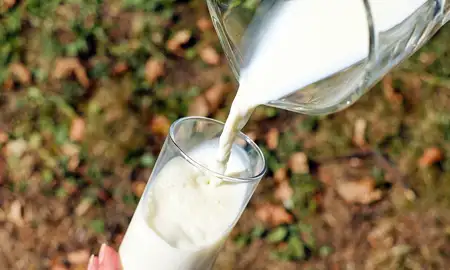
Milking cows once a day can affect protein proportions, says new research.
The study was conducted by Riddet Institute doctoral graduate Dr Marit van der Zeijden as part of her PhD looking at the comparison between once-a-day (OAD) milking and twice-a-day (TAD) milking.
The study found significant differences in the proportion of some proteins, depending on the milking system used.
“Milk from a OAD milking system contained higher proportions of αs2 casein and κ-casein and lower proportions of α-lactalbumin,” Dr van der Zeijden says.
She says this could have implications for milk processing and quality, as gelation and heating properties are impacted by these proteins.
Dr van der Zeijden says this was the first study to look at protein composition across the whole milking season, rather than a single sample. Most similar studies also examined outputs of cows temporarily switched to once-a-day, rather than cows best suited to the regime.
Bovine milk from cows at two Te Kunenga ki Pūrehuroa Massey University research farms in Palmerston North were compared in the study, one on OAD milking and one TAD. Both farms were pasture-based feeding systems, with higher dry matter supplementation on the TAD farm.
The cows were also as homogenous as possible, with nine cows from each system selected comprising the same make up of Holstein-Friesian (three), Holstein-Friesian x Jersey cross (three) and Jersey (three).

Dr Marit van der Zijden.
Dr van der Zeijden took full-milking samples at nine pivotal stages of the milking season – three at the beginning of the season, three in the middle and three towards the end. Samples were also categorised by the day in the lactation stage the cow was in on the day of sampling (early, mid and late). The TAD cows had milk from the two milkings combined.
She says many factors can affect protein composition, including the time in the season and the lactation stage of the cow, from calving to drying off time when protein and fat increase as milk yields decrease, and even the breed of cow. Jersey cows have higher protein and milk fat content in their milk as well as a larger casein-to-whey ratio.
Most dairy farms in Aotearoa New Zealand milk twice-a-day, but OAD milking is increasing in popularity because of its lifestyle benefits.
This research was funded by the Ministry of Business, Innovation and Employment's research programme New Zealand Milks Mean More, and supported by the Riddet Institute, a New Zealand Centre of Research Excellence (CoRE) hosted by Massey University and funded by the Tertiary Education Commission.
Related news
New research sheds light on Chinese consumers’ milk habits
Recent results from a New Zealand government-funded Riddet Institute research programme, NZ Milks Mean More, has provided valuable insights into dairy consumption in China.

Research funding paves way for advanced milk products
Consumers will benefit from new research at the Riddet Institute that hopes to improve the digestion properties of milk-based products.

Food tech grad making a career out of milk
Food technologist Zara Beckingsale, Ngāpuhi, Tūhoe, picked her career out of a book, despite never having heard of the job before.
